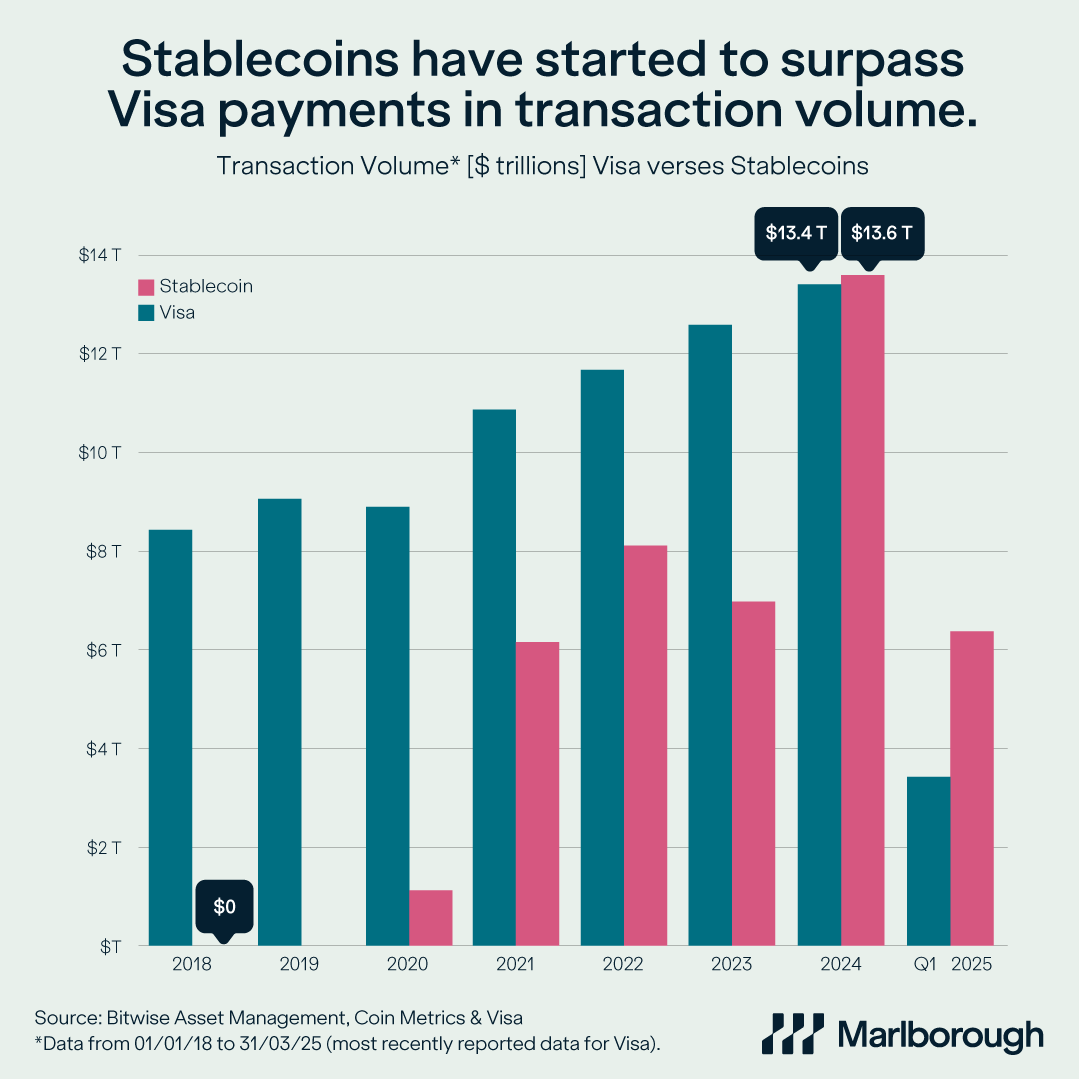Chart of the Week: Money for Nothing - Stablecoins vs Visa: The new way to pay?

Welcome to this week's 'Chart of the Week', where we share key insights to help keep you informed on what's happening in the markets.
We recently got a client question: “What exactly is a stablecoin?”
Here’s the simplest way to think about it. A stablecoin is like digital cash. Imagine a £10 note you can send instantly to anyone in the world, at any time, using your phone. But instead of going through a bank or a card network, it travels over something called a blockchain.
What’s a blockchain? Think of it like the internet’s version of a record book. Every transaction is written into this book, everyone can see it, and no single bank or company controls it. It means money can move as easily as an email or text message.
Now, the reason stablecoins are “stable” is that, unlike Bitcoin or Ethereum, they’re pegged to real money (like the US dollar). One stablecoin equals one dollar, just like a casino chip always equals the value it represents at the cashier’s desk. That way, you get the speed of crypto without the price swings.
And here’s why this matters. Stablecoins only really started in 2019, but last year people and businesses used them in more transactions than Visa: $13.6 trillion worth in 2024 alone. Bank transfers can take a day, credit card settlements can take a couple of days - but stablecoins settle in seconds.

With new laws in the US now aiming to make them safer and more trustworthy, it’s not hard to see why many think stablecoins could be bad for legacy banks and good for crypto.
Key takeaway
For us as multi-asset investors, it’s a reminder of why diversification matters. Times change, tech evolves, and new themes crash the party.
As digital payment infrastructure matures, exposure to innovation across asset classes and geographies becomes essential. By holding diversified portfolios, we gain exposure to themes such as digital payments as they develop.
Find out more about our multi-asset solution
This article is provided for general information purposes only and should not be construed as personal financial advice to invest in any fund or product. These are the investment manager’s views at the time of writing and should not be construed as investment advice. The opinions expressed are correct at time of writing and may be subject to change. Capital is at risk. The value and income from investments can go down as well as up and are not guaranteed. An investor may get back significantly less than they invest. Past performance is not a reliable indicator of current or future performance and should not be the sole factor considered when selecting funds.




